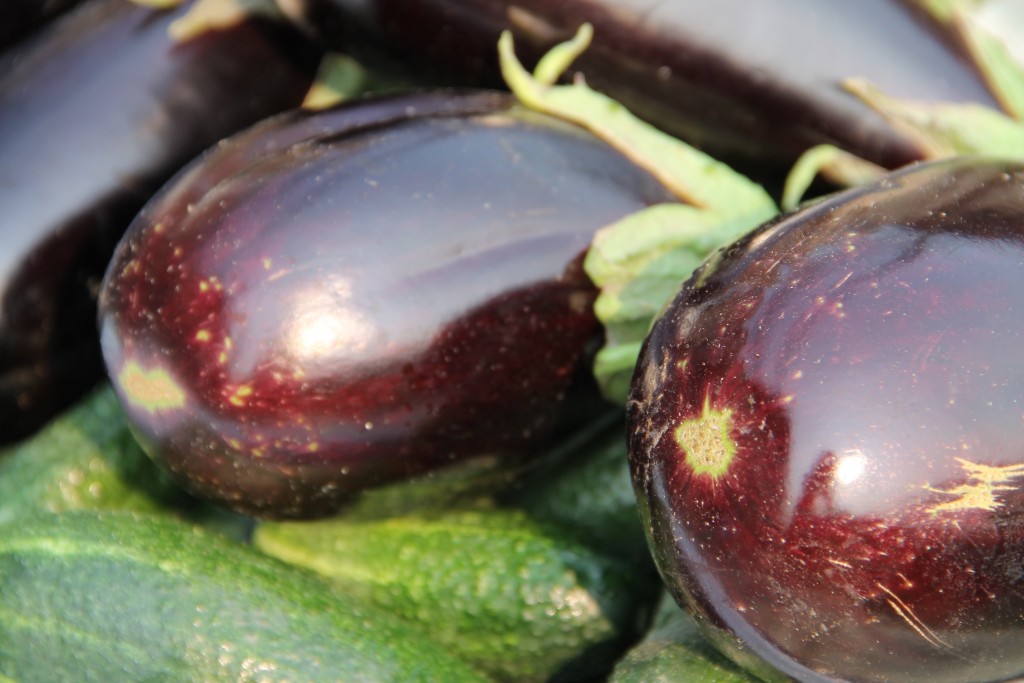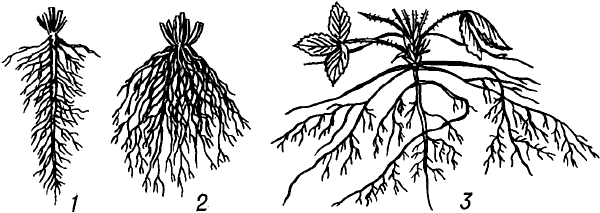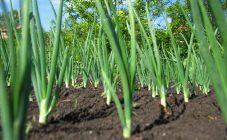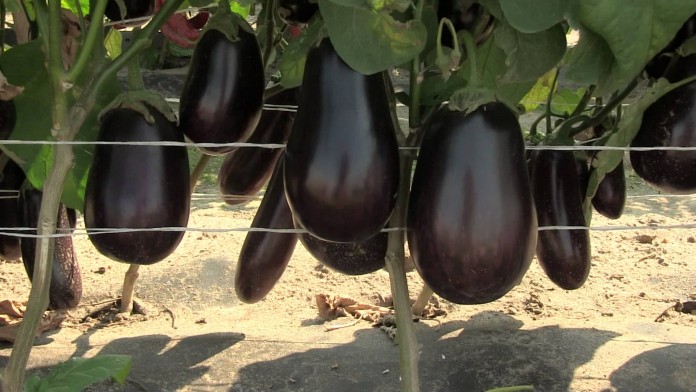Plot owners know that planting the same crops for two years or more will negatively impact their harvest. Each culture must be approached separately and with special attention. Having figured out what to plant after eggplant for the next year, you can properly plan the planting and harvest a good harvest.
Why not every crop can be planted after eggplant
Many summer residents are wondering: what to plant after eggplant? They belong to the nightshade family and, based on the rules of crop rotation, after them you should not plant crops such as tomatoes, potatoes, beans, Swiss chard, carrots, alfalfa, radish, beets, celery, asparagus, pumpkin, horseradish, chicory and the eggplant themselves. You need to wait about three to four years before planting these vegetables in the same place.
It depends on several factors:
The same family
The nightshade family is very bad at planting plants from the same family in the coming season (however, potatoes can be planted in one place for several years and the harvest will be excellent). This is due to the fact that almost all plants from the Solanaceous group need the same microelements, and after eggplants, they practically do not remain in the soil and the harvest will be poor or not at all. To avoid complete depletion of the soil by certain microelements, it is necessary to plant different families of vegetables in turn. Usually after this point it becomes clear that you can plant after eggplant.
Depth of penetration of the root system of some crops
In crop production, there is an important rule of crop rotation: after plants with a deep root system, plants with roots that go to the same depth cannot be planted. This is due to the fact that vegetables with deep roots consume more minerals and cannot grow on the same soil for several years in a row, plants with a small root system consume less and allow deep layers of soil to rest, which the roots do not reach. Also, vegetables with a deep root system dramatically dry up the soil, which does not allow such vegetables to stay in one place for a long time, watering in this case will not help, since the water will not go too deep to the main roots, crops with a small root system do not have such a problem.
Change in soil acidity
Eggplants change the acidity of the soil for themselves. Their norm is 6.7-7 Ph. Vegetables with a norm much higher or lower than this will feel bad or even wither in such soil. Plants whose rates are not so different will yield less than expected. However, there are many ways to change the acidity of the soil:
- To reduce the acidity of the soil, you need to add a solution of quicklime to it. For a slight decrease in acidity, it is enough to add 300-350 grams of quicklime per square meter to the soil. For a greater decrease in acidity, bring the portion of lime to 500-550 grams per square meter.
Bird droppings can also be used to reduce acidity. It creates an alkaline environment in the soil and thus reduces acidity. It is recommended to apply 300-500 grams per square meter, after application, sprinkle well with earth and wait one season. After that, a good harvest can be expected. - To increase the acidity of the soil, you need to prepare an acidic solution and pour it on the ground at the rate of ten liters per square meter. How to prepare the solution: add two tablespoons of oxalic acid to ten liters of water, mix thoroughly.
There is another way to increase acidity. To do this, you need a regular electrolyte for batteries, preferably a new one. Electrolytes are made from diluted sulfuric acid and are perfect for increasing the acidity of the soil on the site. To prepare a solution that will oxidize the soil, you need to take 2-3 milliliters of electrolyte per liter of water and use a liter of solution per square meter. This recipe is valid for an electrolyte with a density of 1.23 g / cm³, if the electrolyte density is 1.82 g / cm³, then only 1 milliliter of electrolyte should be added per liter of water.
After that, it becomes clear what can be planted after eggplant for the next year.
Care tips from experienced gardeners
The first and probably the most important advice, which finally makes it clear what can be planted after eggplants, is that planting vegetables from the same family in the same place will not give special results, and subsequently such crops will no longer take root on such land and will die immediately after landing. There are only two ways to solve this problem, namely:
- Give the soil a break from this plant family for three or four summers. This method is used in the production of large volumes of products.
- It is good to fertilize the soil with various mineral fertilizers; complex fertilizers are best suited. This method is perfect for open greenhouses.
The penetration depth of the crop root system should always be considered. This is due to the fact that vegetables with a deep root system consume more liquid and minerals than plants with a small or medium root system, the soil is drained at all levels and is not ready for planting vegetables with a deep root system.
You need to use the "Top-roots" principle to plan your plantings for next spring. It consists in the fact that after plants that have tops as fruits, it is necessary to plant plants in which tubers are fruits, that is, roots. For example, if dill is growing now, then next year it is worth planting potatoes on the same plot, and it will grow better than it would after a radish. This tip will help you grow many crops.
It should be determined and recorded what part of the garden is occupied by certain vegetables, so it will be easier to mosaic new crops in the future. It is not necessary to plant the entire garden bed with one crop. If cucumbers grow well after eggplants, then you can divide the sowing area into two parts and make one area eggplant and the other cucumber.
It is better to plant the eggplants themselves in the same place after four to five years. If planted earlier, the soil should be well fertilized and watered.
In order to have a good harvest, you need to follow the rules of crop rotation, which are not so difficult and numerous. Eggplants, like all other vegetables, have their own characteristics, which you need to adapt to, otherwise you will not see the harvest. This article describes all the rules and nuances of crop rotation after eggplant, which will help to grow the maximum yield next year.














For many years I planted eggplants in different places, while I did not even think about the fact that the land might be unsuitable for the same carrots and tomatoes after them. Usually you add black soil in the spring or bird droppings (it’s not in vain, it turns out, they explained), and you change the planting sites for vegetables, and everything seems to be fine. Next year I will definitely take into account and plant the same onion in the old eggplant place, see the result.
Of course, I knew from school about what insidious vegetables are from the nightshade family, but I never thought that when planting eggplant, there might be difficulties with planting other vegetables in their place, apparently it's not for nothing that grandmothers have been distributing them in the garden for years and decades different cultures and each has always had a specific place.
As a rule, we have allocated a lot of space for eggplants, so after them we also plant something that is needed in the same volumes. Most often these are zucchini or onions.
I always plant cucumbers, peas or onions in the garden for one season before the eggplant. Tomato after purely intuitively did not plant. As well as potatoes, which grow in a separate field. The length of the root system must always be taken into account so that the soil is not damaged.
I read the article and realized that I do not know everything about planting vegetables. Although he considered himself an experienced gardener. I always planted eggplants in ordinary soil fertilized with humus, but I could not think that I could harm this soil, and as a result, harm other vegetables. Thank you very helpful article!
To be honest, I didn’t know that eggplants spoil the ground like that. Every year my uncle only planted them in the same place, somehow I never asked him about it, but for the general development it was interesting to know!
There is no need to leave the land free, because the weeds will definitely crawl. I plant peas or beans in the place where eggplants grew the next year. The bean harvest is always good!